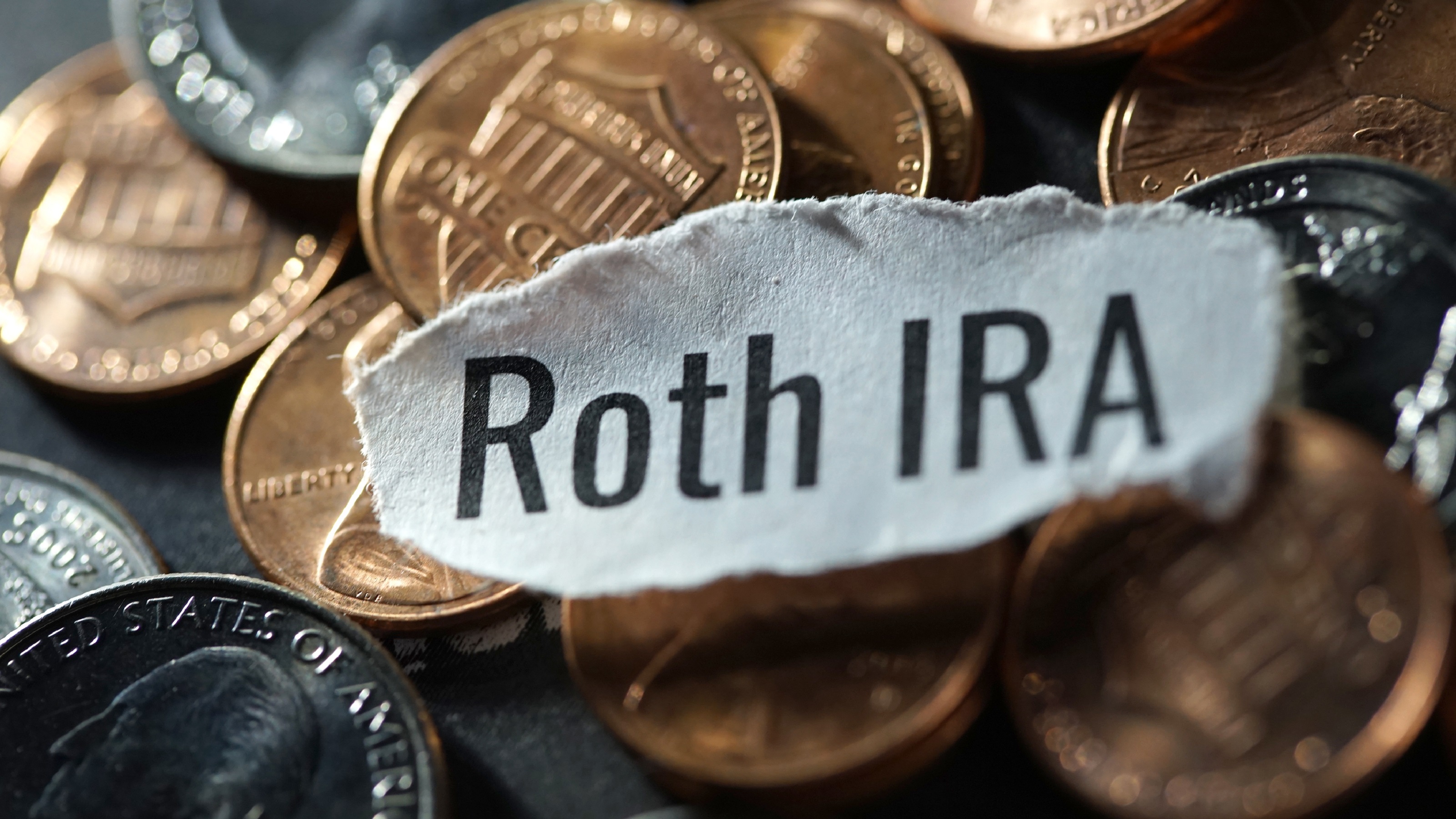Roth IRA Contribution Limits for 2026
Roth IRAs allow you to save for retirement with after-tax dollars while you're working, and then withdraw those contributions and earnings tax-free when you retire. Here's a look at 2026 limits and income-based phaseouts.

Kathryn Pomroy
Roth IRAs are a great way to save for retirement, allowing you to contribute after-tax dollars to an account where your contributions and earnings grow tax-free.
For 2026, the contribution limits for a Roth IRA are $7,500, with an additional $1,000 catch-up contribution for those aged 50 and older. You can also open and contribute to your 2026 Roth IRA until the due date of your 2026 tax return, which is Monday, April 15, 2027.
Here's what you need to know about the 2026 Roth IRA contribution and income limits.
From just $107.88 $24.99 for Kiplinger Personal Finance
Be a smarter, better informed investor.

Sign up for Kiplinger’s Free Newsletters
Profit and prosper with the best of expert advice on investing, taxes, retirement, personal finance and more - straight to your e-mail.
Profit and prosper with the best of expert advice - straight to your e-mail.
2026 Roth IRA contribution limits and income limits
The maximum amount you can contribute to a Roth IRA in 2026 is $7,500 (up from $7,000 in 2025) if you're under the age of 50. If you're 50 or older, you can add an extra $1,000 per year in "catch-up" contributions, bringing your total contribution to $8,500 for 2026 (up from a total contribution of $8,000 in 2025).
The actual amount you are allowed to contribute to a Roth IRA is based on your income. To be eligible to contribute the maximum amount in 2026, your modified adjusted gross income (MAGI) must be less than $150,000 if single, or less than $236,000 if married and filing jointly.
Contributions begin phasing out above these amounts, and you cannot put any money into a Roth IRA once your income reaches $165,000 if you are a single filer or $246,000 if married and filing jointly in 2026.
Roth IRAs vs. traditional IRAs: What's the difference?
Unlike contributions to a traditional IRA, which may be tax-deductible, a Roth IRA has no upfront tax break. Money goes into the Roth after it has already been taxed. But when you start pulling money out in retirement, your withdrawals will be tax-free.
Also, Roths — unlike traditional IRAs — are not subject to required minimum distributions (RMDs) after age 73.
Roths are also more flexible than traditional, deductible IRAs. You can withdraw contributions from a Roth account anytime, tax- and penalty-free. But you must be at least age 59-1/2, and you must have owned the Roth for at least five years. The clock on the five-year holding period starts ticking on January 1 of the year you open the account.
You can open a Roth IRA through a bank, brokerage, mutual fund or insurance company, and you can invest your retirement money in stocks, bonds, mutual funds, exchange-traded funds and other approved investments. You have until the federal tax filing deadline to make your Roth IRA contribution for the prior year.
Read: The Roth IRA Advantage: 10 Things Every Saver Needs to Understand
Roth IRA Pros | Roth IRA Cons |
Tax-free growth | Taxable contributions |
Qualified distributions are tax free | Not available for high-income earners |
Contribute to another person's Roth account as a gift | Lower income limits to contribute |
No required minimum distributions (RMDs) after age 73 | Rollovers from traditional plans are taxable |
Contributions can be withdrawn at any time, penalty- and tax-free | Earnings can’t be withdrawn tax-free until the account is at least five years old and you are age 59-½. |
Offers tax diversification in retirement | Relatively low contribution maximums |
| Row 7 - Cell 0 | Row 7 - Cell 1 |
Is a Roth IRA right for you?
There isn't a minimum age limit to open a Roth IRA, and you can contribute to another person's Roth account as a gift — perfect for parents looking to kick-start a child's retirement savings. Two caveats: Recipients must have earned income, and you can only contribute an amount up to that person's annual earnings, or $7,500 in 2026 (up from $7,000 last year), whichever is less.
Financial experts generally recommend Roth IRAs for people who anticipate a greater tax burden in retirement, whether because of rising income or higher tax rates in general. By paying the taxes on those contributions while your income or tax rate is lower, you’ll reap the benefit of tax-free money later when it counts more. This is especially true for someone who plans to retire in 2026 or later.
The passage of the One Big Beautiful Bill Act has made the current income tax rates permanent, meaning that the existing rates of 12%, 22%, and 24% will remain unchanged, and taxpayers will not face a return to the higher rates from 2017 as many anticipated.
Roth IRAs can also provide valuable tax diversification in retirement and can be a great way to balance other sources of income, such as withdrawals from a 401(k) or Roth IRA and Social Security payments. For instance, those tax-free Roth withdrawals in retirement won’t contribute to your taxable income, which is used to determine how much you pay for Medicare, including any surcharges (also known as income-related monthly adjustment amounts or IRMAAs).
Finally, note that if you invest in both a Roth IRA and a traditional IRA, the total amount of money you contribute to both accounts can't exceed the annual limit. If you do exceed it, the IRS might hit you with a 6% excessive contribution penalty.
Roth IRA savings tips
To make the most of saving for retirement in your Roth IRA:
- Max out your contributions in 2026. For each year that you're able, aim to hit the $7,500 limit.
- Once you turn 50, add another $1,000 to that limit annually. You can add funds to your Roth for as long as you have earnings from work.
- Avoid withdrawing funds you contributed to your account, even though you can do so without penalties or taxes. Letting that money grow in the account over many years means a bigger nest egg in retirement.
Why you should contribute to a Roth IRA
Roth IRAs let you contribute after-tax dollars. While there are no current-year tax benefits, your contributions and earnings can grow tax-free. You can also withdraw them tax- and penalty-free after age 59-½ if the account has been open for at least five years. This makes Roth IRAs an excellent way to save for retirement.
And, with the passage of the SECURE 2.0 Act, you may be eligible to contribute to your Roth IRA using 529 rollover assets. Traditional IRAs do not qualify for this option.
Want more guidance on retirement savings? Sign up for Kiplinger's six-week series, Invest for Retirement.
Related Content
- 17 States With Scary Estate and Inheritance Taxes
- Three Creative Ways to Lower Your Retirement Taxes
- Want to Reduce the IRMAA? Consider a Roth Conversion
- Inherited an IRA? Four Things Every Beneficiary Should Know
Profit and prosper with the best of Kiplinger's advice on investing, taxes, retirement, personal finance and much more. Delivered daily. Enter your email in the box and click Sign Me Up.
Jackie Stewart is the senior retirement editor for Kiplinger.com and the senior editor for Kiplinger's Retirement Report.
- Kathryn PomroyContributor
-
 3 Ways High-Income Earners Can Maximize Their Charitable Donations in 2025
3 Ways High-Income Earners Can Maximize Their Charitable Donations in 2025Tax Deductions New charitable giving tax rules will soon lower your deduction for donations to charity — here’s what you should do now.
-
 Another State Quietly Bans Capital Gains Tax: Will Others Follow?
Another State Quietly Bans Capital Gains Tax: Will Others Follow?Capital Gains A constitutional amendment blocking future taxes on realized and unrealized capital could raise interesting questions for other states.
-
 How to Calm Your Retirement Nerves When It's Time to Shift from Savings Mode to Spending Mode
How to Calm Your Retirement Nerves When It's Time to Shift from Savings Mode to Spending ModeTransitioning from saving to spending in retirement can be tricky, but devising a strategic plan can help ensure a smooth and worry-free retirement.
-
 Why Wills and Trusts Aren't Enough in the Great Wealth Transfer, From an Attorney Who Knows
Why Wills and Trusts Aren't Enough in the Great Wealth Transfer, From an Attorney Who KnowsFamilies need to prepare heirs through communication and financial know-how, or all that money could end up causing confusion, conflict and costly mistakes.
-
 Private Markets for Main Street: What Financial Advisers' Clients Need to Know
Private Markets for Main Street: What Financial Advisers' Clients Need to KnowWith product innovation 'democratizing' private market access for everyday investors, advisers must step up their game to educate clients on the pros and cons.
-
 I'm 58, Divorced, and Dating Again, but Women Just Seem to Care About the Size of My Bank Account
I'm 58, Divorced, and Dating Again, but Women Just Seem to Care About the Size of My Bank AccountDoes size matter? We ask experts in dating, financial planning and law for advice.
-
 Seven Practical Steps to Kick Off Your 2026 Financial Planning
Seven Practical Steps to Kick Off Your 2026 Financial PlanningIt's time to stop chasing net worth and start chasing real worth. Here's how to craft a plan that supports your well-being today and in the future.
-
 A Retirement Plan Isn't Just a Number: Strategic Withdrawals Can Make a Huge Difference
A Retirement Plan Isn't Just a Number: Strategic Withdrawals Can Make a Huge DifferenceA major reason not to set your retirement plan on autopilot: sequence of returns risk. Here's how to help ensure a bad market won't sink your golden years.
-
 Fish and Chips? More Like Fish and a Side of Customer Confusion and Anger
Fish and Chips? More Like Fish and a Side of Customer Confusion and AngerYou expect chips — French fries, actually — to come with your order of fish and chips? Think again. This restaurant could be violating the truth-in-menu laws.
-
 I'm Embarrassed to Ask: What Is a Life Insurance Trust?
I'm Embarrassed to Ask: What Is a Life Insurance Trust?Life insurance trusts, particularly irrevocable life insurance trusts (ILITs), can minimize estate taxes and protect your heir's inheritance.